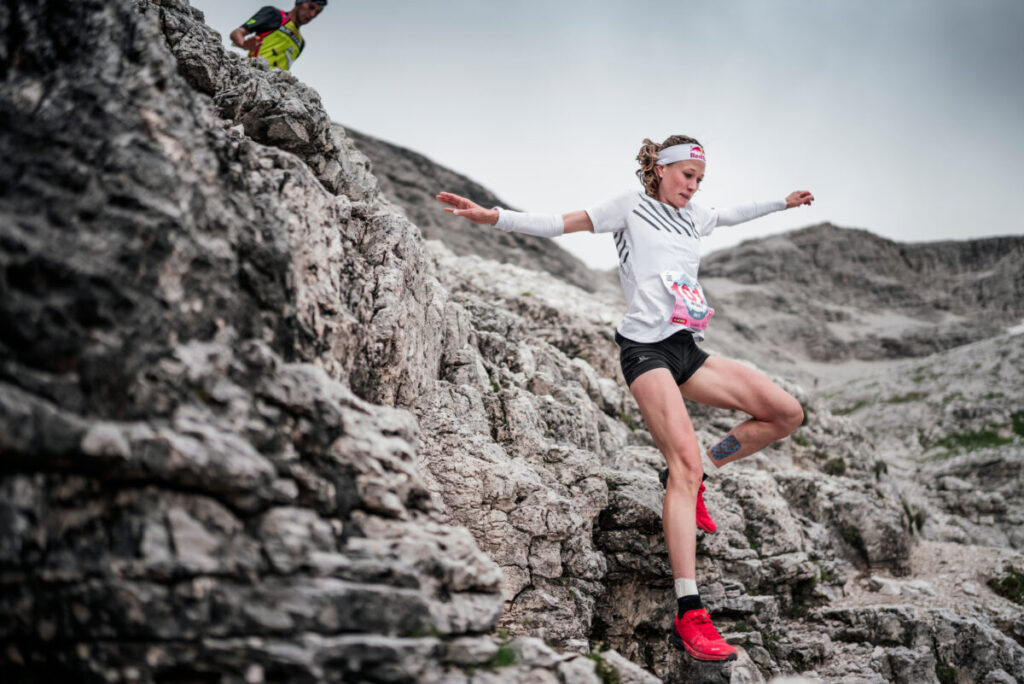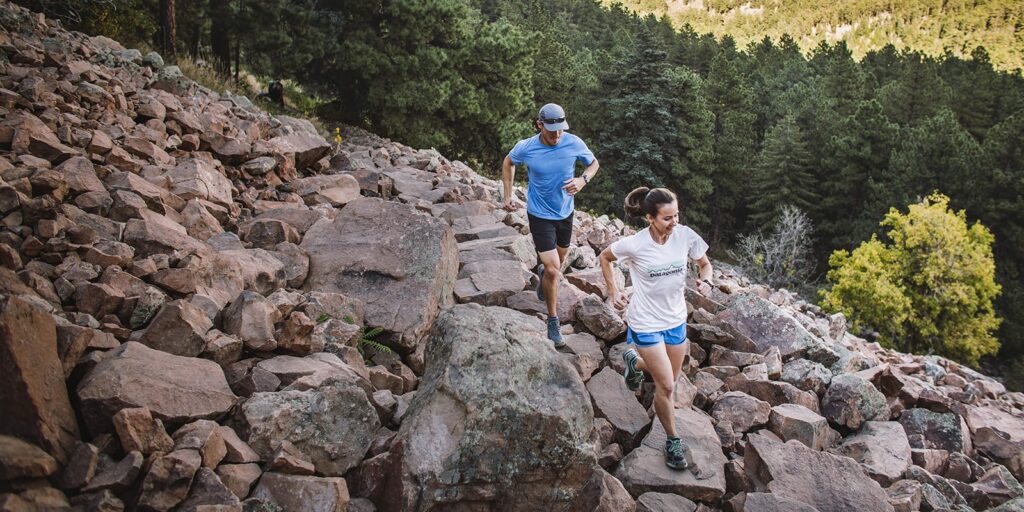
Across the nation, a quiet revolution is taking place in the realm of fitness. Trail running, once an exclusive pursuit for seasoned athletes, is blossoming into a beloved activity enjoyed by people from all walks of life. The rhythmic crunch of gravel beneath your feet and the embrace of fresh air brush away urban fatigue, inviting those who yearn for both movement and escape into nature’s fold. With every stride on a sun-dappled path or through shadowy woods, new runners are discovering how exhilarating it can be to merge physical challenge with natural beauty.
Imagine not just sweating in a crowded gym but feeling alive amidst towering trees and chirping birds. Trail running fosters this unique bond between mind and environment, offering mental clarity alongside cardiovascular benefits that traditional workouts often lack. For beginners seeking not only fitness but also adventure, this sport presents an enriching opportunity. As you delve deeper into our guide, you’ll uncover essential gear recommendations, practical tips for navigating trails safely, and insights on embracing nature’s wonders while building endurance. So lace up your shoes; the trails await!

Finding the Right Shoes
Selecting the right footwear is crucial when stepping into the world of trail running. Unlike the smooth, predictable surfaces of paved roads, trails often feature uneven terrains that can challenge even seasoned runners. Proper shoes serve as your first line of defense against potential injuries while also enhancing performance. Wearing inappropriate or worn-out shoes can lead to discomfort, blisters, and even long-term joint issues. Therefore, investing in a good pair designed specifically for trail running could make all the difference in your experience.
When searching for a trail running shoe that meets your needs, there are three key features to prioritize: grip, support, and cushioning. Grip is essential because trails can be slippery or rocky; look for shoes with deep lugs on the outsole to maintain traction regardless of conditions. Support plays a vital role in protecting your feet and ankles from twists and turns common on rugged paths; this means finding a shoe that fits snugly without being overly tight. Lastly, sufficient cushioning will keep your feet comfortable over longer distances—look for models that offer a balanced mix of responsiveness and softness to absorb shock but still provide a connected feel to the ground.
Brands like Salomon and Hoka One One have made strides in producing reliable trail running options for beginners. For those on a budget, Merrell’s Moab 2 GTX offers an impressive blend of affordability and comfort along with great traction for various terrains. Meanwhile, Altra’s Lone Peak series is renowned for its roomy toe box and supportive construction—a solid choice if you prefer more space around your toes during runs. Familiarizing yourself with different types of shoes through local stores allows you to try them on; it’s invaluable for finding what feels best for your foot shape.
As you prepare to head out onto those winding paths lined with trees or open fields bursting with wildflowers, remember that the right shoes are not just about comfort—they’re about unlocking new adventures in nature. Your feet carry you through miles of beauty waiting to be discovered; treat them well by choosing footwear that empowers rather than limits your journey into trail running.
Gear Up for Success
As you embark on your trail running journey, the right gear can significantly enhance your experience. While proper footwear is paramount, it’s essential to outfit yourself with the necessary apparel and accessories tailored to the unpredictable nature of outdoor environments. Start with moisture-wicking clothing that keeps you dry and comfortable during your runs. Fabrics like polyester or merino wool are excellent choices since they help regulate body temperature while combating odor. Consider investing in a lightweight, weather-resistant jacket that can readily fold into your hydration pack—perfect for brisk wind or sudden rain showers.
Speaking of hydration packs, these handy essentials will ensure you’re never left parched while navigating picturesque trails. A good hydration pack allows you to carry water conveniently without hindering your movement. Look for packs with adjustable straps for comfort and storage pockets to stow away keys or energy gels. If you prefer a more minimalist approach, a simple handheld bottle will suffice—just make sure it fits comfortably in your grip. Hydration stations can be sparse on some trails, so replenishing fluids frequently is vital, especially when temperatures soar.
In the age of technology, equipping yourself with gadgets can elevate your trail running game even further. A reliable GPS watch not only tracks distance but also offers insights into pace and elevation changes—crucial information for assessing how you’re performing on varied terrains. For those who enjoy connecting through their devices post-run, apps like Strava or MapMyRun help record routes and share achievements within a community of fellow trail enthusiasts. Whether it’s spotting fellow runners through real-time updates or pushing yourself with virtual challenges, embracing this tech-savvy aspect could motivate you to lace up those shoes more often.
Lastly, don’t forget about safety items such as a whistle or headlamp in case the sun sets earlier than expected during your run. Having a small first aid kit with essentials like adhesive bandages or blister treatment can provide peace of mind when tackling remote trails where medical assistance isn’t just around the corner. By gearing up thoughtfully, you’ll be well-prepared to explore the dynamic world of trail running—all while enjoying every step taken among nature’s beauty.
Choosing Your Trail
Selecting the right trail is crucial for any beginner hoping to enjoy the exhilarating experience of trail running. For those just stepping into this adventurous realm, a few important factors come into play: elevation changes, terrain type, and overall distance. Beginners should seek out well-marked paths with gentle inclines and forgiving surfaces. Rocky or heavily wooded trails can be intimidating at first; opt for smoother routes that allow you to focus more on your form and breathing than on evading obstacles. Local parks often provide accessible options, while scenic routes around lakes or through lightly forested areas offer engaging views without overwhelming challenges.
To ease your search for the perfect starting point, there are a wealth of resources available. Websites like AllTrails and TrailLink have become go-to platforms where users share reviews, photos, and detailed descriptions of local trails. Smartphone apps like MapMyRun also assist novices in identifying suitable paths tailored to their fitness levels. Even social media can connect eager runners with community groups dedicated to discovery; joining a local Facebook group may lead to new friends who will accompany you on your early ventures in nature.
It’s wise to begin with easier trails before advancing to more demanding terrains. Starting small allows you to build confidence and develop stamina without risking injury from overexertion. A short 3-mile loop in a nearby nature reserve can introduce you to the rhythm of running outdoors while providing an ideal environment for practicing proper technique. Once you’ve mastered these straightforward stretches and feel comfortable tackling them confidently, gradually venturing onto more engaging – yet challenging – paths will keep both your motivation high and sense of adventure alive.
Ultimately, embracing these initial steps will lead not only to skill growth but often sparks a newfound appreciation for the beauty surrounding us. Every runner has their own journey; by choosing wisely where to tread first, you’re setting off down a path rich with potential discoveries – both about yourself and the great outdoors waiting just beyond your front door.

Mastering Technique
Establishing a good running form is essential for both efficiency and injury prevention, especially when you take your strides onto rugged terrain. Many new runners are unaware that small adjustments in posture can make a significant difference. Keep your head up, shoulders relaxed, and engage your core; this allows for better balance and stability on uneven surfaces. Imagine effortlessly gliding along a winding forest path. You’ll want to maintain a slight forward lean while keeping your feet light under your body. This not only improves speed but also reduces the strain on joints.
When it comes to tackling elevation changes, having techniques up your sleeve can turn challenges into triumphs. Uphill techniques often involve shorter strides with higher knee lifts; think of each step as an opportunity to propel yourself upward rather than dragging yourself along. For downhill sections, it’s crucial to embrace gravity without losing control—you’ll want to lean slightly back while keeping your feet underneath you, allowing them to land softly instead of slamming into the ground. Picture yourself zipping down a steep trail—effective technique will transform moments of dread into exhilarating experiences.
Pacing is another vital aspect of mastering trail running technique. Unlike road running where predictability reigns supreme, trails require you to adapt based on variable terrain—roots here, rocky outcrops there—meaning consistent pacing might lead you directly into fatigue or injury territory. Listen to your body; slower isn’t synonymous with weaker. Start at a comfortable pace that encourages enjoyment and conversation if you’re with friends. As you build endurance over time, you’ll find yourself progressively ready to push those limits further.
Ultimately, mastering these techniques doesn’t only enhance performance; it cultivates confidence and awareness while navigating nature’s whims. With practice makes perfect becoming reality in every stride taken along the trails ahead, remember: it’s all part of a remarkable journey both on foot and through the vastness around you. So lace up those shoes and prepare for the adventure awaiting just outside your door!
Connecting with Nature
There’s something transformative about stepping onto a trail, the crunch of gravel beneath your shoes mingling with the rustle of leaves above. Studies consistently highlight the mental health benefits of being outdoors, showing that spending time in nature can reduce stress, anxiety, and even feelings of depression. For new runners, these psychological advantages are particularly poignant. Whether it’s the tranquil beauty of a winding path or the invigorating scent of pine trees after rain, nature serves as an antidote to life’s daily pressures, inviting us to breathe deeper and move forward with purpose.
Mindfulness comes alive on the trails. Each step becomes intentional when you immerse yourself in your surroundings—the glimmering sunlight through tree branches or the distant call of birds. This experience creates a unique rhythm wherein running transforms from a mechanical action into a meditative practice. As you navigate uneven terrain and hills, your mind clears; worries dissolve in tandem with your breath. Trail running shifts focus from racing against time to immersing oneself fully in the present moment—an opportunity for clarity and reflection that urban environments often can’t provide.
But this intimate relationship with nature also carries responsibilities. As you lace up your shoes for your next adventure, consider adopting Leave No Trace principles—a simple yet powerful approach to ensure our favorite trails remain unmarred for future generations. Reducing waste by packing out what you pack in is key: wrapper here, bottle there—these small items can disrupt ecosystems if carelessly discarded. Staying on marked paths helps preserve delicate flora while respecting wildlife habitats that may share your journey through the woods.
As each run becomes both an escape and an exploration—of yourself and the wild spaces around you—you’ll find greater appreciation for our planet’s beauty. So hit those trails not simply as a routine exercise but as a conscious commitment to nurture both body and soul while honoring the environment that enriches every stride.

Trail Running Safety Tips
Trail running can be an exhilarating escape into nature, but safety must always take priority. Before setting foot on a new trail, whether exploring solo or with a group, make sure to familiarize yourself with the terrain and any potential hazards. Have a reliable map or trail app at hand, as signs might not always be clear. Consider leaving your phone’s battery saver mode off; you never know when you’ll need GPS guidance to find your way back. In groups, establish meeting points in case anyone gets separated—communication is key.
Nature can be unpredictable. Sudden weather changes can transform a sunny morning run into a wet slog within moments. Always check forecasts before heading out and consider packing lightweight rain gear or an extra layer for chilly descents. Wildlife encounters add another unique element to trails; while spotting deer might be thrilling, coming across bears necessitates caution. Make noise while running to avoid surprising animals and proactively educate yourself on local wildlife etiquette—reading up on how to handle bear sightings in particular will give you peace of mind while you’re gliding over rocky paths.
Moreover, the buddy system should be your go-to philosophy for hitting the trails safely. Inform someone about your planned route and expected return time before venturing out alone. Sharing this information provides an added layer of safety; it ensures that someone will notice if you don’t return as scheduled—a simple precaution that could save your life in unexpected situations like getting lost or injured. Lastly, trust your instincts and pay attention to how you’re feeling throughout the run; it’s better to turn back than push through discomfort.
With these practical safety measures in place, you can embrace the thrill of trail running without undue worry. Enjoying fresh air and stunning scenery should come hand-in-hand with preparation—letting nothing spoil your adventure amidst the trees and along rushing streams.
Building Community
Engaging with fellow trail runners can transform your running experience from a solitary endeavor into a supportive and dynamic journey. Joining local clubs is one of the most effective ways to connect with like-minded individuals who share your passion for the trails. Many communities offer organized group runs, which not only introduce you to new routes but also provide you with helpful tips on technique and pacing. For instance, a beginner in Boulder, Colorado might join the “Boulder Trail Runners,” where members frequently meet for guided treks through picturesque state parks. These connections foster camaraderie and make every run feel less daunting.
Participating in events such as 5K trail races or fun runs can elevate your motivation levels tremendously. The thrill of racing alongside others often pushes you beyond your perceived limits—perfect for cultivating perseverance and physical stamina. Plus, these occasions are ripe for discovering new gear, nutrition strategies, and training techniques shared by experienced participants. For example, after completing a scenic trail race in Marin County, many runners exchange stories about their favorite local trails—or even collaborate on their next training plans—solidifying bonds that enrich the community atmosphere.
Sharing experiences within this framework further enhances personal growth as a runner. Platforms such as Strava or AllTrails allow runners to log their adventures and receive feedback from peers. Online forums dedicated to outdoor enthusiasts also serve as safe spaces where newcomers can ask questions ranging from the best trail shoes to advice on overcoming specific challenges they encounter during runs. By tapping into shared insights and learning from each other’s tales of triumphs—and setbacks—you’ll find yourself steadily growing more confident while embracing the journey ahead.
Ultimately, becoming an active member of a trail-running community opens up opportunities not just for fitness improvement but also for meaningful relationships forged through sweat-drenched laughter and shared views of breathtaking landscapes. As you lace up your shoes and hit those trails, remember: you’re never truly alone; there’s an entire network of passionate runners ready to support you every step of the way.

Overcoming Challenges
Trail running, while exhilarating and refreshing, is not without its hurdles—both physical and mental. For new trail runners, fatigue often sets in quicker than anticipated, especially on uneven terrains that demand more from their bodies than a flat road. It’s important to listen to your body; if you feel overwhelmed, it’s better to walk until you regain your breath rather than push through discomfort. It’s also wise to start with shorter distances and gradually build up endurance. If tiredness creeps in early during a run, consider integrating walking intervals into your routine. Not only will this help manage fatigue, but it can also become a valuable tool for building stamina over time.
Fear of injury is another common concern for beginners hitting the trails. Uneven surfaces, roots, rocks—these elements might intimidate newcomers who worry about falling or twisting an ankle. However, understanding your surroundings can mitigate this fear. By picking suitable trails suited for your skill level and focusing on where you place your feet can cultivate confidence as you adapt to varied conditions. You might even find inspiration in stories shared by seasoned runners who have faced similar fears—and transformed them into invaluable learning experiences that add depth to their journeys.
Staying motivated during tough runs requires mental resilience and savvy strategies. Visualize completing the run before setting out; picture yourself cresting a hill and being greeted by sweeping views or dipping down a favorite path with the wind at your back. Setting mini-goals throughout the run is another powerful tactic—be it reaching a certain landmark or simply running for five more minutes before taking a break—which shifts focus away from potentially discouraging longer distances and fosters a sense of accomplishment. It’s vital to remind yourself that setbacks are part of growth: every stumble teaches us something new about our abilities and helps hone our approach for the next outing.
Finally, remember that every experienced runner has faced challenges along their journey, often sharing relatable tales of missteps or self-doubt they encountered on harsh trails. Embracing these hardships cultivates resilience; each hurdle makes future obstacles easier to conquer. Welcome setbacks not as signs of failure but stepping stones propelling you towards improvement—a philosophy embodied by many athletes across disciplines who view every challenge as an opportunity waiting patiently for discovery on the winding trails ahead.
Embrace the Trails Ahead
As you stand at the threshold of your trail running journey, picture this: a winding path surrounded by nature’s beauty, the soft crunch of dirt underfoot, and the invigorating rush of fresh air filling your lungs. Trail running is not merely a fitness endeavor; it is an invitation to connect with the earth beneath you and uncover hidden pockets of serenity in our fast-paced world. Each step on those trails can ignite a sense of adventure, offering both physical challenges and mental clarity that few other activities can provide.
Now is the time to seize that opportunity. Lace up your shoes, venture outside, and let each run become a personal expedition—one that unfolds new landscapes while enhancing your well-being. The trails await with open arms. Embrace them with confidence and curiosity; you may find more than just fitness benefits—you might discover a community, a passion, and perhaps even yourself along the way.









 Home
Home  Whishlist
Whishlist  Compare
Compare  Blog
Blog